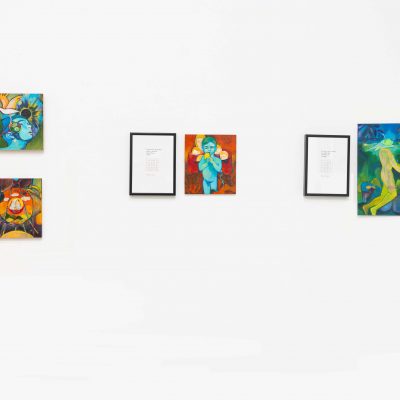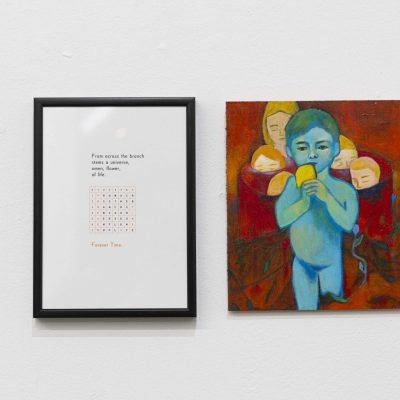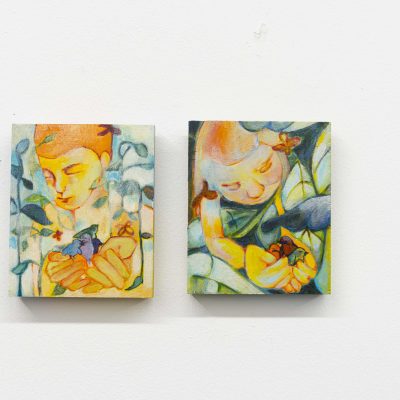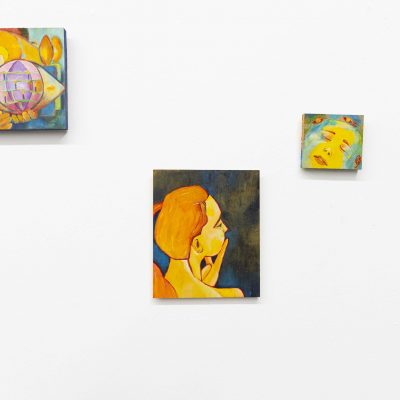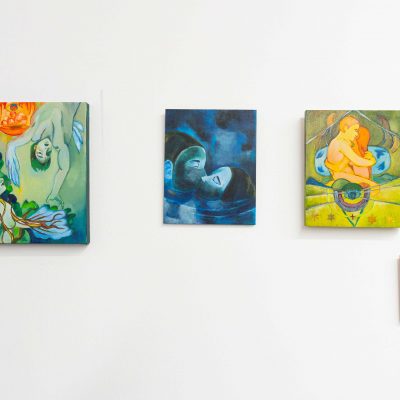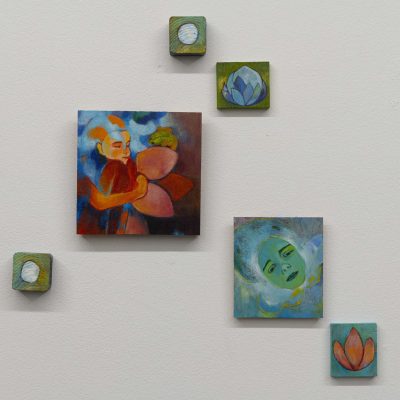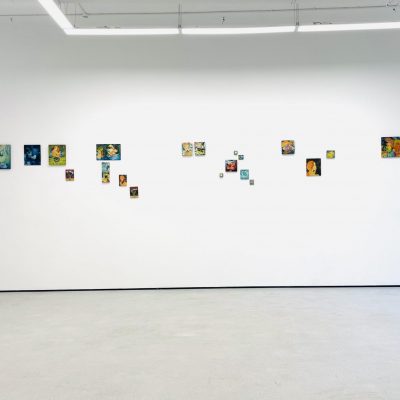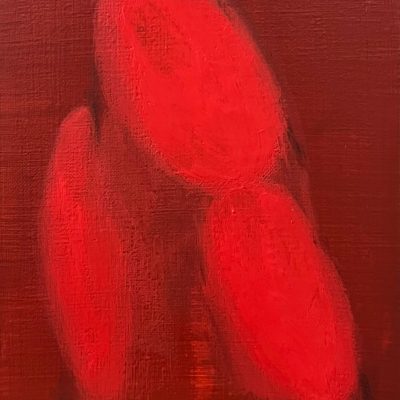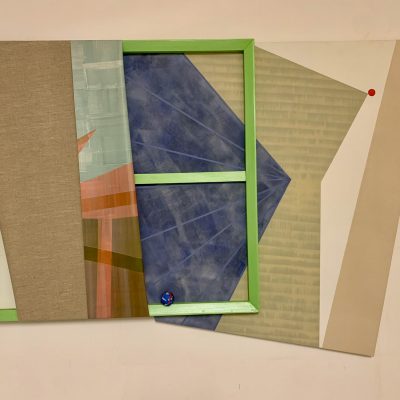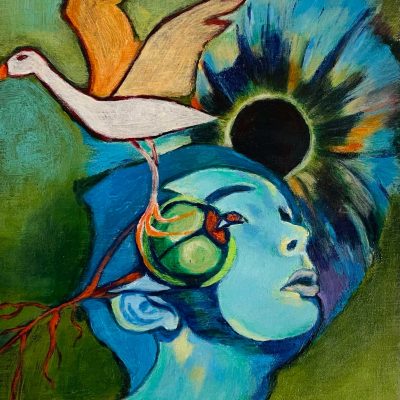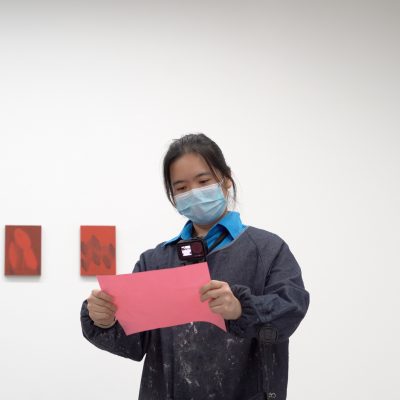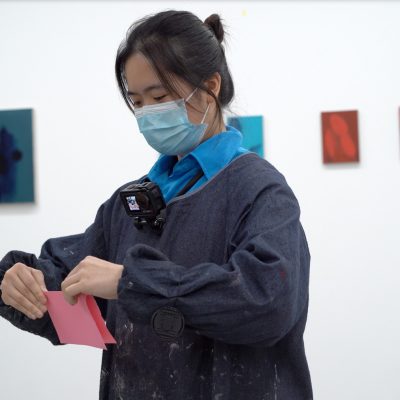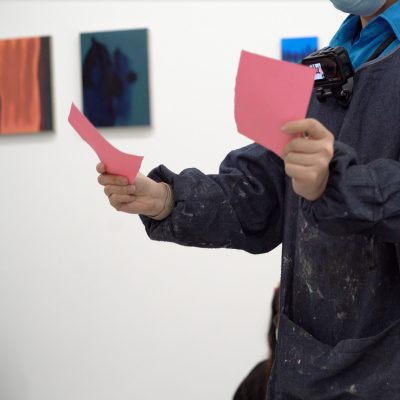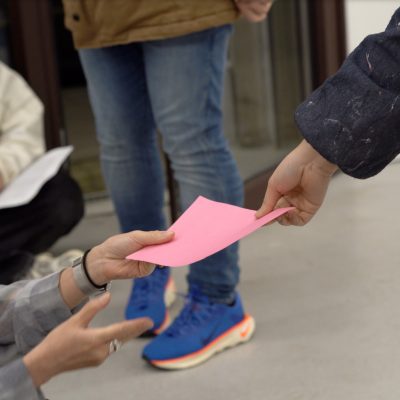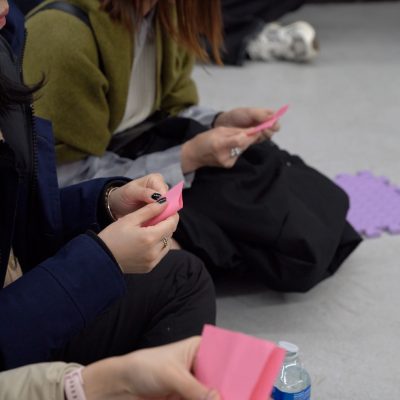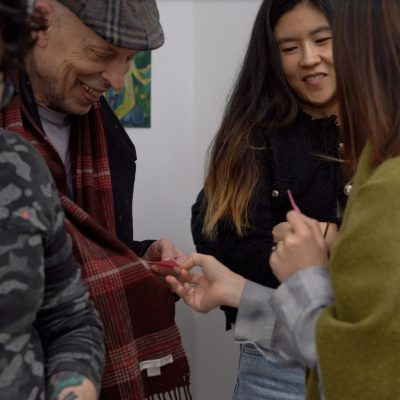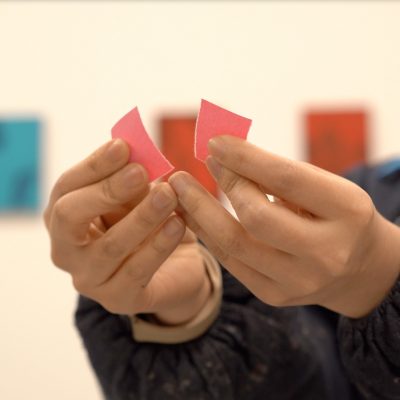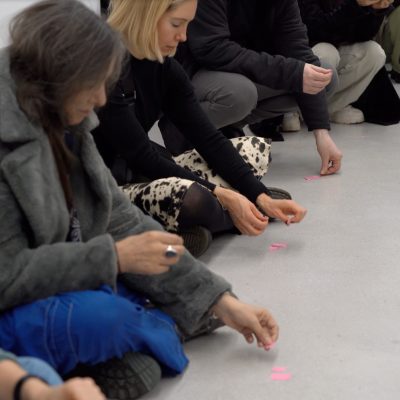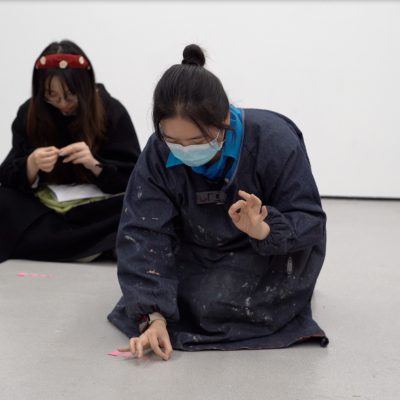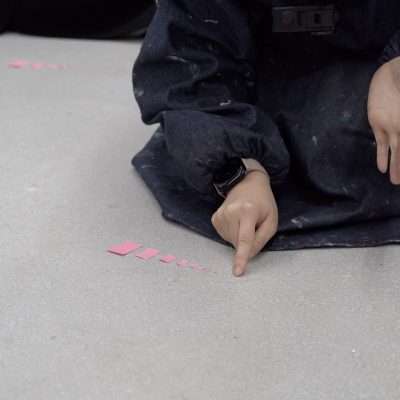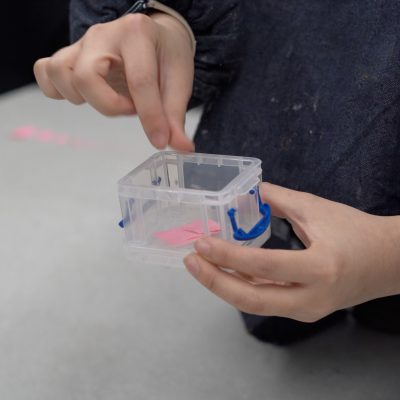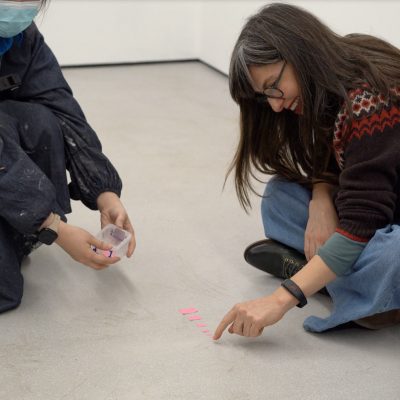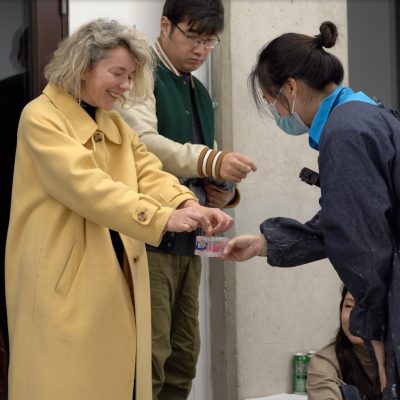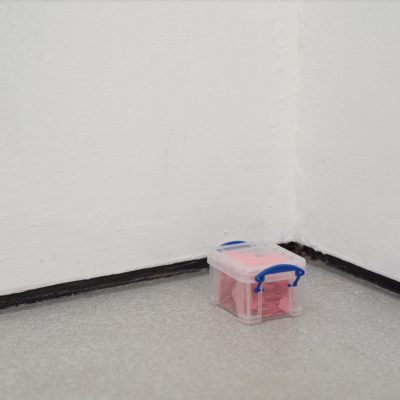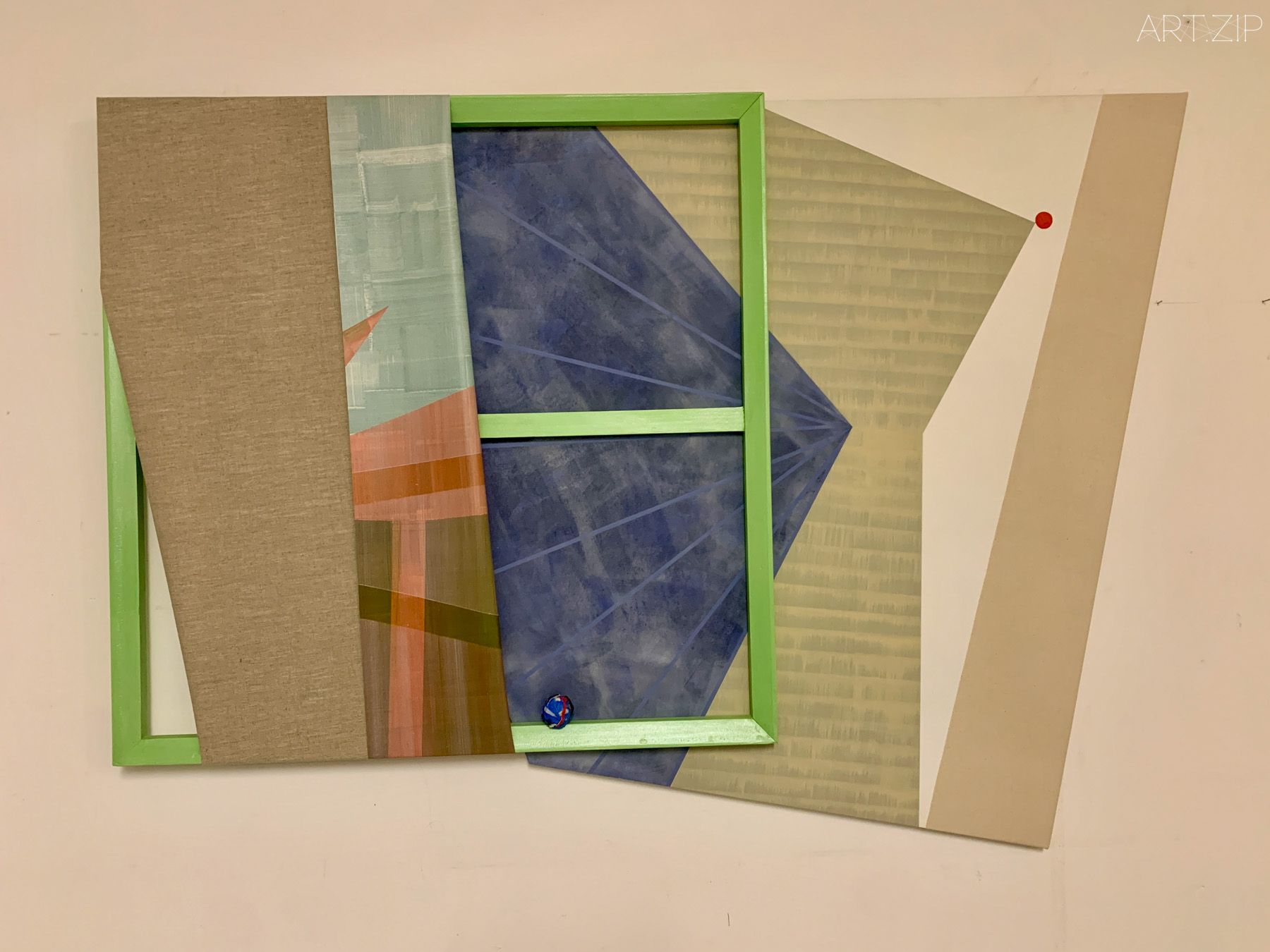
Is the elsewhere a discernible place, or a circulation of the potential arrival of place? Anyway, this might be a state that is outside of immediate visibility, but there is nevertheless, a sense of something being there. It might even be the shape of the ‘yet to come’ looking back or a gaze of the indefinite future.
A trace is something on the edge of disappearance, like a drift of a cloud passing by unnoticed before dissolving, or a glance of a face in a half-remembered encounter, thus a form of reverberation without the definite form of the already there, in place.
Within the present, some sentences are halfway through being uttered and then sink back into the blank of emptiness from which they first arose. Nothing remains of such events, not even the registration of there being such, and so indexicality is erased.
Is then a trace, a form of halfway between there being something and there being nothing? Does then the trace secure the possibility of a third state between these two states of presence and absence? A case of questions issuing even more questions.
A schematic passage functions like a trace linking what cannot be seen, with what later becomes the secured naming of it. The schema is always a mystery of what lies deep before and beyond comprehension, knowing that it is at work, but without immediate sense of what it is, or what it does.
Painting exists as an art because of what remains over after saying and naming has exhausted itself. It is the circulation through and around the condition of the fragment, performing a visual arrest of something revolving in a state of restlessness on the edge of becoming. This state can incline towards either qualities of fading or excess of definition.
Are paintings close to what symptoms are to the body in exhibiting a sign of something without being able to reveal the cause? Perhaps a symptom could be read as a relation of a third kind (intimacy of the inside combined with the striation of the outside as an example). A painting does not signify its own original impulse, nor indicate its own unique destination. It refuses to draw such definite lines because they would be to erase the circulation that desire releases. Desire is always becoming other, and as such, is never a first or final cause of something, but resides within the elsewhere of this. Thus, painting is locked in a strife to complete that which is averse to closure. It gestures towards a condition of freedom that cannot be possessed as such.
An exhibition might be understood as the assembly of atmospheric vapour trails subject to wind to blow it this way or that. As such, it is attempting a delicate arousal of a latent sense, that in awaiting itself, is like a stutter of a half-forgotten language that is implicated within the staging of this assembly. In this case, it is three painters and four performers, who elect the exposure of striated boundaries, risking in the process, the circulations of a rapidly disminishing outside.
This exhibition as an event contains a double temporality, that of the plastic and textual. The fragile mixing of the event of this difference then comes to the fore. One touches upon the other, as discharge of sense and the falling away of a pre-secured clarity, to leave the reality of pure exposure. That is all there is, the pure extent of exposure, obscure and luminous in equal measure. Obscure because of the way that schemas, striations, and symptoms co-mingle outside of being named, but luminous because autonomy demands this as a condition. Art as an outcome of a mixing machine, a delicate gestural organising apparatus, but whatever, just small paintings vibrating in the space of their own accord. In turn vistas are culled and redistributed, suspensions of arrested sense being presented, each in turn providing a chain of occurrence to the production of the new.

The works by Chenxi Xu showing in the gallery space, POETICS OF THE DEEP Series, Acrylic and Oil on Canvas, 15 x 21 cm, 2024
Chenxi Xu, Jiyeon Ryu, and Xiao Yu, the three painters in the exhibition, each engage in their own distinct ways with the elusive and indeterminate concept of ‘elsewhere’.
Chenxi revealed her main source of inspiration was a novel unlike any other novels she had read. “Clarice Lispector” she said, “taught me how to be in the present, whether it was with language or colour. Agua Viva(1973) is simply a way of being with an involuntary instinct outside of any sense of subject matter.”
When asked to list a series of words that related to her painting, Xiao Yu replied: “Circulation, suspension, folding, cutting, striation, reversal, becoming, loops, shifting. These words weave invisible lines into what structures my work and at the same time resist direct interpretation.”
Jiyeon Ryu is slowly constructing an imaginary labyrinth that opens the arrival of a different worlds. She said that it might be a world, or a series of worlds, before the divide of nature and culture, so without a semblance to her present sense of reality. Perhaps this served to transport us into realm without gravity, which is one of the routes into abstracted depiction. Everything simply floats in their own accord.
「別處」究竟是一個可以看見的地方,還是某種即將到來的可能?無論如何,這或許是一種隱而不見的狀態,但依然讓人感覺到它的存在。一種似乎無法觸及卻真實存在的暗示,它甚至可能是「未來將至」的模樣在回望我們,或者是一種對不確定未來的注視。
痕跡是某種接近消失的東西,如同一朵雲輕飄過未被察覺,然後無聲消散;又或者是,一個半記得的相遇中匆匆掠過的面容。痕跡是一種回響的形式,但它從不給予具體的形態或位置。它始終游離於存在與缺席之間,彷彿對「有」與「無」的拒絕。它指向某種中途狀態,一個模糊地保有開放性的可能性。
在當下,有些話語在說到一半時便沉入它們最初誕生的空白虛無中。這些片段既不留下任何記錄,也無法確立任何指涉性,它們的消逝本身成為了一種微妙的痕跡。然而,這種消逝並非全然的缺席,因為它總是以某種方式與未來可能性產生隱秘的聯繫。
那麼,痕跡是否是一種介於「存在」與「消散」之間的第三種狀態?它是否能確保在「有」與「無」之外的世界中,仍存在一種模糊的連結?一種尚未完全顯現,卻又在場的暗示?痕跡總是示意性的,它像一個輕微的影子,將不可見的事物與後來被命名的東西連結在一起。這種示意圖式的存在隱藏著某種神秘——它位於理解之前,且存在於理解之外。雖然我們知道它在發揮作用,但卻無法立即掌握它的本質。
繪畫,或許便是這種痕跡的載體。當語言與命名無法再表達時,繪畫以視覺捕捉了那些難以言喻的瞬間。在片段與片段之間,在不安與生成的邊緣,它展現了一種狀態:既接近消散,又即將浮現。這些未被完全說明的東西,隱隱指向一種新的可能性——它們可能逐漸消失,也可能變得清晰無比,但在這過程中始終拒絕被框定。
繪畫是否如同身體的症狀,展示某種跡象,但卻不揭示其原因?或許,症狀本身可以被理解為一種介於內部親密性與外部條紋之間的第三種關係。繪畫的獨特性在於,它既不象徵某一具體的初衷,也不指向一個確定的目的地。它拒絕明確的邊界,因為邊界會抹殺欲望的流動性。而欲望的本質,正是不斷變化、流動,並轉變為某種「別處」。因此,繪畫既不是某物的初因,也不是最終原因,而是存在於某種「別處」之中。繪畫的核心,是一場持續進行的鬥爭——它抗拒被固定、被擁有,始終指向一種無法被掌控的自由狀態。
展覽,作為一種動態而模糊的呈現方式,則進一步延展了這種自由狀態。展覽像隨風飄動的蒸汽,朝不同方向移動,試圖微妙地喚醒潛藏的感知。這些感知如同半遺忘的語言,難以捕捉,但卻不斷與展覽的呈現交織。參與展覽的三位畫家與四位表演者選擇揭示那些模糊的邊界,冒著變化與消逝的風險,使整個展覽充滿了一種不穩定卻極具表達力的特質。
展覽作為事件,包含著雙重時間性。一方面是塑性——與材料、形狀和物理層面的交互;另一方面是文本性——與語言、概念和敘述相關的建構。這兩者之間的混合是脆弱的,但也因此在展覽中得以顯現。它們相互影響,如同感知的釋放,逐漸消解預先設想的清晰界限。最終留下的,是一種「純粹暴露」的狀態:一種完全開放、沒有明確邊界的現實,既模糊(難以完全理解或捕捉),又明亮(充滿表達和可能性)。兩者之間達到了一種平衡。模糊,是因為各種圖式、條紋、和症狀在未被命名的狀態下交織,這使得它們難以理解;然而,這種模糊也是其自主性的一部分,是展覽自由表達的必然條件,讓它在不確定中依然充滿可能性和光輝。
藝術如同一台混合機器的產物,一種精細的姿態組織裝置,但無論如何,最終只是一幅幅小畫在空間中自顧自地振動著。隨之而來的是視野的剪裁與新的發生,那些被懸置的感知被重新分配。在展覽中,每一件作品都像是一種被暫時捕捉的狀態,而這些狀態依次構成了一種連續的發生,推動著新的創造出現。

Lychee One:Fragments of the Elsewhere
4th December 2024
Artists: Chenxi Xu, Jiyeon Ryu, Xiao Yu
Performances: Alex Donnelly, Molly Grad, Jessica Marden, Jiachen Zeng
Text by Jonathan Miles
Edited by Michelle Yu

